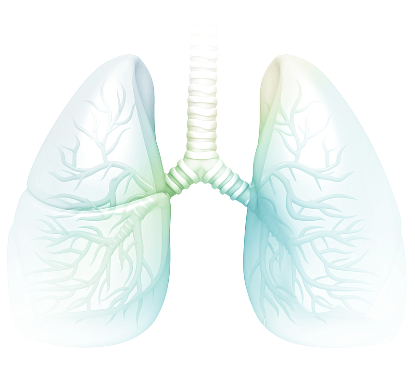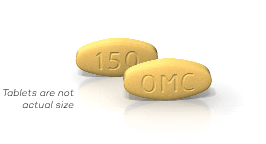For US Healthcare Professionals only
PRESCRIBINGINFORMATION REQUEST
SAMPLES

NUZYRA is indicated for the treatment of Community-Acquired Bacterial Pneumonia (CABP) and Acute Bacterial Skin and Skin Structure Infections (ABSSSI) in adults caused by select susceptible microorganisms.

REAL-WORLD RESULTS IN CABP
Clinically cured* after a single course of oral, once-daily NUZYRA1†
*Clinical cure at the post-treatment evaluation was defined as survival and improvement in signs and symptoms of
CABP, based on the clinician’s judgment, to the extent that further antibacterial therapy is not necessary.1
†For treatment of CABP, the oral loading dose is 300 mg twice on Day 1.1
The following case study reflects a real
SCROLL TO EXPLORE PATIENT’S TREATMENT JOURNEY


SYMPTOMS
3-DAY HISTORY OF FEVER, COUGH, AND
RUSTY SPUTUM PRODUCTION
Physical exam findings

64-year-old male
3-day history of cough, and rusty sputum production
Respiration rate: 22 breaths/min
VITALS
- Temperature: 101°F
- O2 Saturation: 95% on room air;
drop to 91% on ambulation - HR: 103 bpm

Medical history
COPD
Type 2 diabetes
Heart failure
Hypertension
Obesity
Beta-lactam allergy
History of ventricular fibrillation
Current medications

- Sacubitril/valsartan
- Icosapent ethyl
- Metformin
- Insulin lispro
- Tramadol
- Simvastatin
- Amiodarone
- Insulin glargine
- Ranitidine

Lab and imaging assessments
Blood cultures obtained before starting antibiotic
Creatinine 1.4
BUN 19
Respiratory Viral Panel
No initial or follow-up chest X-ray was obtained


DIAGNOSIS
COMMUNITY-ACQUIRED BACTERIAL PNEUMONIA
Considered local Streptococcus pneumoniae
resistance to macrolides and doxycycline
before making treatment decision
PATIENT WAS PRESCRIBED ORAL NUZYRA1

LOADING DOSE:
300 mg twice on Day 1,
followed by
MAINTENANCE DOSE:
300 mg once daily for
a total of 10 days
Why NUZYRA is appropriate
Patient is allergic to beta-
lactams, which precludes use of
amoxicillin/clavulanate
NUZYRA is an alternative
to patients who are
allergic to beta-lactam2
Local Streptococcus pneumoniae resistance to macrolides
and doxycycline
Broad-spectrum coverage of tough-to-treat pathogens, including Streptococcus pneumoniae,
make NUZYRA an acceptable
treatment consideration2
Patient characteristics increase
risk for prolonged QTc
In clinical studies, prolongation was not reported with NUZYRA2
Patient has multiple comorbidities requiring treatment with multiple medications
NUZYRA has limited drug-drug interactions2
NUZYRA is not expected to interact with drugs metabolized by cytochrome P450 enzymes
Patients on anticoagulant therapy may require downward adjustment of their anticoagulant dosage while taking NUZYRA
Absorption of oral tetracyclines is impaired by antacids containing aluminum, calcium, or magnesium, bismuth subsalicylate, and iron-containing preparations

Symptom improvement noted on
telemedicine follow-up 72-hours
after initiation of NUZYRA

In-office follow-up
on Day 10
RESULTS
PATIENT SHOWED SYMPTOM IMPROVEMENT IN 3 DAYS
AND HAD CLINICAL CURE BY DAY 101
The case study reflects a real patient experience using NUZYRA.
Individual results may vary.
Ready to Prescribe
once-daily NUZYRA?
Have a question?
Ask a represenative.
View an additional real-world case study in CABP.
EXPLORE NOWNUZYRA® (omadacycline) is a tetracycline-class antibacterial indicated for the treatment of adult patients with the following infections caused by susceptible microorganisms:
Community-Acquired Bacterial Pneumonia (CABP) caused by the following:
Streptococcus pneumoniae, Staphylococcus aureus (methicillin-susceptible isolates), Haemophilus influenzae, Haemophilus parainfluenzae, Klebsiella pneumoniae, Legionella pneumophila, Mycoplasma pneumoniae, and Chlamydophila pneumoniae.
Acute Bacterial Skin and Skin Structure Infections (ABSSSI) caused by the following:
Staphylococcus aureus (methicillin-susceptible and -resistant isolates), Staphylococcus lugdunensis, Streptococcus pyogenes, Streptococcus anginosus grp. (includes S. anginosus, S. intermedius, and S. constellatus), Enterococcus faecalis, Enterobacter cloacae, and Klebsiella pneumoniae.
USAGE
To reduce the development of drug-resistant bacteria and maintain the effectiveness of NUZYRA and other antibacterial drugs, NUZYRA should be used only to treat or prevent infections that are proven or strongly suspected to be caused by susceptible bacteria.
IMPORTANT SAFETY INFORMATION
CONTRAINDICATIONS
NUZYRA is contraindicated in patients with known hypersensitivity to omadacycline or tetracycline-class antibacterial drugs, or to any of the excipients.
WARNINGS AND PRECAUTIONS
Mortality imbalance was observed in the CABP clinical trial with eight deaths (2%) occurring in patients treated with NUZYRA compared to four deaths (1%) in patients treated with moxifloxacin. The cause of the mortality imbalance has not been established. All deaths, in both treatment arms, occurred in patients > 65 years of age; most patients had multiple comorbidities. The causes of death varied and included worsening and/or complications of infection and underlying conditions. Closely monitor clinical response to therapy in CABP patients, particularly in those at higher risk for mortality.
The use of NUZYRA during tooth development (last half of pregnancy, infancy and childhood to the age of 8 years) may cause permanent discoloration of the teeth (yellow-gray-brown) and enamel hypoplasia.
The use of NUZYRA during the second and third trimester of pregnancy, infancy and childhood up to the age of 8 years may cause reversible inhibition of bone growth.
Hypersensitivity reactions have been reported with NUZYRA. Life-threatening hypersensitivity (anaphylactic) reactions have been reported with other tetracycline-class antibacterial drugs. NUZYRA is structurally similar to other tetracycline-class antibacterial drugs and is contraindicated in patients with known hypersensitivity to tetracycline-class antibacterial drugs. Discontinue NUZYRA if an allergic reaction occurs.
Clostridioides difficile associated diarrhea (CDAD) has been reported with use of nearly all antibacterial agents and may range in severity from mild diarrhea to fatal colitis. Evaluate if diarrhea occurs.
NUZYRA is structurally similar to tetracycline-class antibacterial drugs and may have similar adverse reactions. Adverse reactions, including photosensitivity, fixed drug eruption, pseudotumor cerebri, and anti-anabolic action (which has led to increased BUN, azotemia, acidosis, hyperphosphatemia, pancreatitis, and abnormal liver function tests), have been reported for other tetracycline-class antibacterial drugs, and may occur with NUZYRA. Discontinue NUZYRA if any of these adverse reactions are suspected.
Prescribing NUZYRA in the absence of a proven or strongly suspected bacterial infection is unlikely to provide benefit to the patient and increases the risk of the development of drug-resistant bacteria.
ADVERSE REACTIONS
The most common adverse reactions (incidence ≥2%) are nausea, vomiting, infusion site reactions, alanine aminotransferase increased, aspartate aminotransferase increased, gamma-glutamyl transferase increased, hypertension, headache, diarrhea, insomnia, and constipation.
DRUG INTERACTIONS
Patients who are on anticoagulant therapy may require downward adjustment of their anticoagulant dosage while taking NUZYRA.
Absorption of tetracyclines, including NUZYRA is impaired by antacids containing aluminum, calcium, or magnesium, bismuth subsalicylate and iron containing preparations.
USE IN SPECIFIC POPULATIONS
Lactation: Breastfeeding is not recommended during treatment with NUZYRA.
Please see Full Prescribing Information for NUZYRA.
References:
- NUZYRA [Prescribing Information]. Paratek Pharmaceuticals, Inc.
- Data on file. Paratek Pharmaceuticals, Inc.